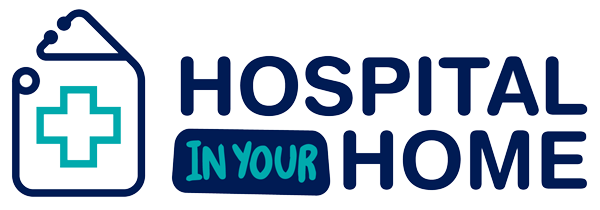The Evolution of Home Hospitalization: From Niche Service to Mainstream Solution

Home hospitalization, once a niche healthcare service, has swiftly become a mainstream solution, offering a compassionate alternative to traditional hospital stays.
This evolution reflects not just advancements in technology and policy but also a changing perception of patient care quality.
This article explores the transformative journey of home hospitalization from its humble beginnings to its current role as a vital component of modern healthcare systems.
History
The concept of receiving medical care in the comfort of one’s home is far from modern.
In ancient times, before the advent of hospitals, it was common for healers and physicians to visit patients at home.
However, the formal system of home hospitalization as we know it began to take shape in the early 20th century, particularly during times when hospital beds were scarce or during pandemics similar to the 1918 influenza outbreak.
The resurgence of interest in home-based medical care in the late 20th century was driven by high healthcare costs, an aging population, and an increase in chronic disease management, which required ongoing, sometimes daily, medical interventions.
These needs pushed the medical community to think beyond traditional hospital settings.
Technological Advancements Propelling Home Hospitalization
A significant driver behind the feasibility of home hospitalization today is technological advancement.
Portable medical equipment, such as mobile ventilators and compact dialysis machines, now bring complex medical treatments into the home setting.
Telehealth technology has also played a crucial role. Real-time data transmission and video conferencing allow healthcare providers to monitor patients remotely, reducing the need for constant physical presence without compromising care quality.
For instance, a pilot program conducted by a leading U.S. hospital showed that the use of telehealth technologies in home hospitalization reduced costs by 30%, decreased readmission rates, and improved patient satisfaction scores significantly.
Policy and Regulatory Changes
Policy changes have been instrumental in integrating home hospitalization into the mainstream.
The introduction of regulations that allow reimbursement for home-based care has made it a viable option for many patients and providers.
The Affordable Care Act, for example, included provisions that encouraged the use of home-based care for chronic disease management.
Further legislative support has been seen with the passing of acts that specifically fund technological innovations and pilot programs testing the effectiveness of home hospitalization.
These policies acknowledge the role of home care in reducing hospital readmissions and improving patient outcomes.
Benefits of Home Hospitalization
The benefits of home hospitalization are compelling. Clinically, patients recover faster when in a familiar environment, as they are less exposed to hospital-acquired infections.
Economically, it represents significant savings for healthcare systems. A study found that home hospitalization could reduce costs by up to 40% compared to traditional hospital care.
Moreover, the psychological and emotional comfort it provides patients cannot be overstated.
Being at home means patients can be surrounded by family and maintain a sense of normalcy, which can greatly enhance their mental and emotional well-being.
Challenges and Limitations
Despite its advantages, home hospitalization isn’t without challenges.
Accessibility remains a significant hurdle, especially in rural or underserved areas where medical resources and broadband connectivity—essential for telehealth—are limited.
There are also cases where home hospitalization isn’t suitable, such as for patients requiring intensive, round-the-clock care.
Operational challenges also exist, including the need for healthcare providers to manage logistics and maintain a fleet of portable medical equipment, and ensuring that healthcare professionals are trained to deliver high-quality care outside traditional hospital settings.
The Future of Home Hospitalization
Looking forward, home hospitalization is poised for further growth.
Innovations in artificial intelligence and machine learning could lead to even more sophisticated home-based care technologies, such as advanced monitoring systems that predict health deteriorations before they occur.
Experts predict that the next decade will see an expansion of home hospitalization into even more complex medical treatments, potentially making the home the epicenter of a wide array of medical care, from post-surgical care to chemotherapy.
Conclusion
The evolution of home hospitalization from a niche service to a mainstream solution reflects broader shifts in healthcare towards more patient-centered, cost-effective, and technologically driven solutions.
As this model grows, it promises to redefine how care is delivered, making the home a cornerstone of compassionate and effective medical treatment.
If you’re interested in how home hospitalization can benefit you or your organization, contact Hospital In Your Home US to see how we can help you succeed with this innovative care model.
For insights into the depth of experience we bring, explore Hospital In Your Home Australia, which has over 30 years of experience in implementing home hospitalization solutions.
FAQs
What is home hospitalization, and how has it evolved?
Home hospitalization refers to providing hospital-level care to patients in their own homes. It has evolved from a niche service for specific cases into a mainstream healthcare solution, driven by advancements in technology, telemedicine, and patient-centered care models.
What are the key benefits of home hospitalization?
The primary benefits include reduced hospital readmissions, improved patient comfort, and cost savings for both healthcare providers and patients. It also helps reduce hospital overcrowding and enhances personalized care.
How has technology impacted the growth of home hospitalization?
Innovations in telemedicine, remote monitoring, and mobile health technologies have made it easier to provide comprehensive care at home. These advancements allow healthcare providers to track vital signs, manage treatments, and communicate with patients in real-time.
Who can benefit from home hospitalization?
Patients with chronic illnesses, post-surgical recovery needs, or those requiring long-term care can benefit from home hospitalization. It’s particularly advantageous for elderly patients and those with mobility challenges who prefer treatment in a familiar environment.
What challenges does home hospitalization face as it becomes more mainstream?
Key challenges include ensuring proper reimbursement models, maintaining high-quality care, and integrating home hospitalization into existing healthcare systems. There is also a need for ongoing investment in technology and staff training to meet growing demand.
